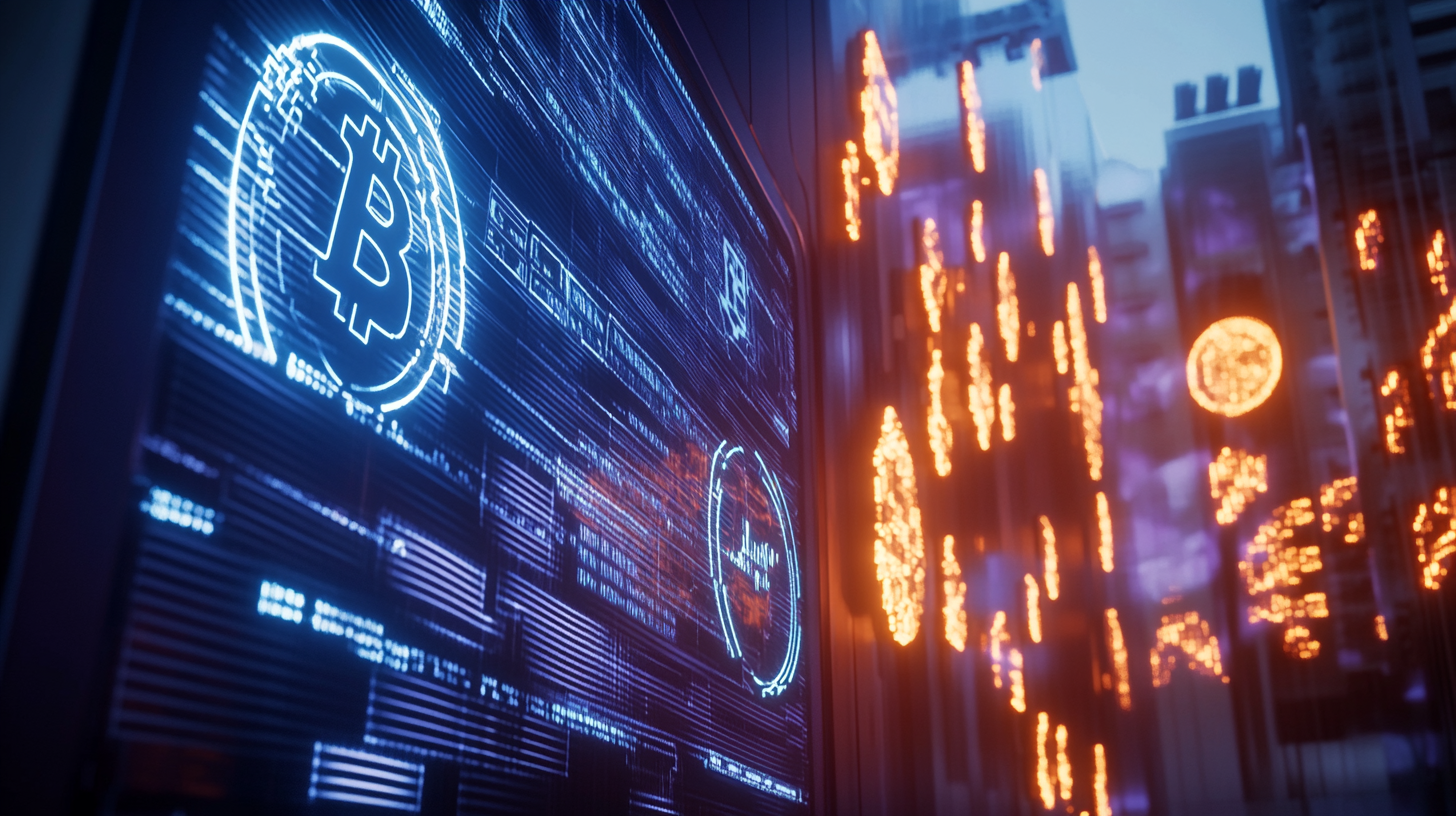On TradeLocker, there are three big markets to trade in: Forex, Indices, and Cryptocurrencies. Each one’s got its own personality, its own risks, and its own rewards. We will walk you through them, highlight the good and the bad, and toss in a few strategies to get you thinking. We’ll dig deeper into those strategies in part three, so stick with me. For now, let’s get you oriented.
Forex Markets
Usually when people ask what is forex trading, the short answer: forex is a market where people exchange currencies. The real definition of forex, it is a global marketplace for the trading of one nation’s currency for another. The forex market is the largest, most liquid market in the world, with trillions of dollars changing hands every day. It has no centralized location, and no government authority oversees it. The forex is an electronic network of banks, brokerages, institutional investors, and individual traders (mostly trading through brokerages or banks).
In trading industry Forex hold more than currencies, forex traders, usually trade forex, indices, metals, energy and some types of commodities. Our experience gives us a bit of an insight where we differentiate only between forex, indices and crypto, approach to these markets are different. This is why we need to explain how and what is forex trading actually.
Currency Pairs
TradeLocker offers access to major currency pairs, including EUR/USD, GBP/USD, USD/JPY, USD/CHF, AUD/USD, and CAD/USD, among others. Additionally, it includes precious metals like XAU/USD (Gold), often traded as a safe-haven asset within the Forex market. These instruments are available as CFDs, allowing traders to speculate on price movements without owning the underlying assets.
Trading in Forex
Forex markets are highly liquid, operate 24/5, and are driven by economic indicators, central bank policies, and geopolitical events. Their moderate volatility and tight spreads make the following strategies particularly effective:
Fundamental Analysis
This involves trading based on economic data (e.g., GDP, inflation), interest rate decisions, and global events. Forex prices are heavily influenced by macroeconomic factors, making it ideal for traders who analyze news and fundamentals.
- Example: Buying EUR/USD before an expected ECB interest rate hike, anticipating Euro strength.
Carry Trade
Borrow in a currency with a low interest rate and invest in one with a higher rate, profiting from the differential. Forex’s focus on interest rates and stable currency pairs supports this strategy.
- Example: Borrowing JPY (low rate) to buy AUD (higher rate) and holding the position to earn interest.
Scalping
Making quick, small profits from minor price movements, often with high-frequency trades. Tight spreads and lower volatility in Forex allow for precise, low-risk entries and exits. You can read more about scalping here.
- Example: Trading GBP/USD during the London session, capturing 5-10 pip moves.
Pros and Cons of Forex
Good sides of Forex
- High Liquidity: The Forex market’s immense size ensures trades can be executed quickly with minimal slippage, making it ideal for both short-term and long-term strategies.
- 24/5 Trading: The market’s extended hours allow traders to react to global economic events in real-time, such as central bank announcements or geopolitical developments.
- Leverage: Forex trading on TradeLocker typically offers high leverage, enabling traders to control large positions with a small amount of capital. For example, a 100:1 leverage means controlling $100,000 worth of currency with just $1,000.
- Low Transaction Costs: Tight spreads and low commissions, often provided by brokers integrated with TradeLocker, make Forex trading cost-effective.
Bad sides of Forex
- Leverage Risk: That same leverage can destroy your account if you overreach. One bad trade can erase weeks of gains.
- Complexity: You need to understand economic indicators and their ripple effects, which isn’t a quick learn.

Crypto Markets
Cryptocurrencies are digital or virtual currencies that use cryptography for security and operate on decentralized blockchain technology. They are not controlled by any central authority, making them a unique and emerging asset class. The global cryptocurrency market has a total market capitalization of around $2.9 trillion as of April 2025, with Bitcoin (BTC) dominating at approximately 63.52% (CoinMarketCap). Other notable cryptocurrencies include Ethereum, XRP, and Litecoin, though TradeLocker’s focus is primarily on BTC/USD.
Crypto Pairs
TradeLocker usually offers trading on BTC/USD, ETH/USD, XRP/USD, SOL/USD, allowing traders to speculate on crypto price movements against the US Dollar. Depending on the broker or prop firm connected to the platform, other crypto CFDs may also be available, though BTC/USD, ETH/USD, XRP/USD, SOL/USD are usually as the most traded pairs. This setup enables trading without owning the actual cryptocurrency, leveraging price volatility for potential gains.
Trading Crypto
Momentum Trading
Entering trades during strong price movements, expecting the trend to persist because usually sharp swings provide opportunities to ride momentum.
- Example: Buying BTC/USD after a breakout above $30,000, expecting continued upward pressure.
Mean Reversion
Betting that prices will return to their average after a significant move. Crypto’s volatility often leads to overreactions, followed by corrections.
- Example: Shorting ETH/USD after a 15% surge, anticipating a drop to its 20-day average.
News-Based Trading Description: Reacting quickly to news or events (e.g., regulatory updates, blockchain upgrades), crypto prices are hypersensitive to breaking developments.
- Example: Buying XRP/USD after a favorable legal ruling, expecting a sentiment boost.
Arbitrage
Exploiting price differences across exchanges by buying low and selling high, the fragmented market and varying liquidity create frequent arbitrage opportunities.
- Example: Purchasing BTC on Binance at $29,800 and selling on Coinbase at $30,000.

Pros and Cons of Crypto
Good sides of Crypto
- High Returns:
- 24/7 Trading: Unlike traditional markets, cryptocurrencies can be traded around the clock, seven days a week, providing flexibility for traders in different time zones.
- Potential for High Returns: The crypto market has seen rapid growth, with Bitcoin reaching all-time highs in recent years. CFD trading allows traders to capitalize on these movements without holding the asset long-term.
- No Physical Ownership: Trading crypto CFDs means speculating on price movements without the need for wallet management or security concerns associated with holding cryptocurrencies.
Bad sides of Crypto
- Volatility: Cryptocurrencies are known for significant price swings, offering substantial trading opportunities. For example, Bitcoin’s price can move 5-10% in a single day, driven by news or market sentiment.
- Regulation: It’s less regulated, so scams, hacks, or manipulation are real risks.
Cryptocurrency prices are highly sensitive to regulatory news (e.g., government bans or approvals), technological developments (e.g., blockchain upgrades), and market sentiment, often amplified by social media and celebrity endorsements. The market’s volatility requires robust risk management, as losses can exceed initial deposits due to leverage. TradeLocker’s platform supports real-time data and charting tools, helping traders navigate this fast-paced environment. Given the 24/7 nature, traders must stay vigilant, as significant price movements can occur outside traditional trading hours.
Indices Markets
tock market indices are collections of stocks representing a particular market or sector, serving as benchmarks for economic performance. They are calculated based on the market capitalization or price-weighted averages of their constituent companies. For instance, the NAS100 (Nasdaq 100) tracks 100 of the largest non-financial companies listed on the Nasdaq, focusing on technology and consumer services, while the US30 (Dow Jones Industrial Average) includes 30 prominent U.S. blue-chip companies across various industries.
Indices Pairs
| Ticker | Index Name | Description |
|---|---|---|
| NAS100 | Nasdaq 100 Index | The 100 largest non-financial companies listed on the Nasdaq exchange, tracking leading technology and growth firms. |
| US30 | Dow Jones Industrial Average (DJIA) | Tracks 30 large, publicly owned blue-chip companies trading on the NYSE and Nasdaq, serving as a widely watched gauge of the U.S. economy. |
| SPX500 | S&P 500 | A market-cap-weighted index of 500 leading U.S. companies, representing roughly 80% of U.S. market capitalization. |
| DAX40 | DAX 40 | Blue-chip index of forty of the largest companies by market cap on the Frankfurt Stock Exchange. |
| JPN225 | Nikkei 225 | Measures the performance of 225 highly capitalized and liquid Japanese companies across diverse sectors, calculated as a price-weighted average. |
| UK100 | FTSE 100 | Tracks the 100 most highly capitalized blue-chip companies on the London Stock Exchange, serving as the benchmark for the UK equity market. |
| ESP35 | IBEX 35 | The benchmark index of the Bolsa de Madrid, composed of the 35 most liquid and largest market-capitalization Spanish companies. |
| EUSTX50 | Euro Stoxx 50 | Covers 50 leading blue-chip companies from 11 Eurozone countries, weighted by free-float market capitalization, reflecting euro-area’s largest firms. |

Pros and Cons of Indices
Good sides of Indices
- Diversification: Trading indices provides exposure to a basket of stocks, reducing the risk associated with individual stock volatility. For example, a drop in one company’s stock price may be offset by gains in another within the index.
- Liquidity: Major indices like NAS100 and US30 are highly liquid, ensuring smooth trade execution and minimal slippage, especially during high-volume trading periods.
- Leverage: Similar to Forex, CFDs on indices offer leverage, amplifying potential profits. However, this also increases the risk of losses, necessitating careful position sizing.
- Market Trends: Indices reflect broader market sentiment and economic health, making them useful for traders looking to capitalize on macroeconomic trends, such as economic recovery or sector rotation.
Bad sides of Indices
- Market Hours: Unlike Forex, indices trade during stock market hours, so your window is narrower.
- Economic Sensitivity: Big news—like Federal Reserve updates or earnings reports—can send them swinging.
Indices are influenced by corporate earnings reports, economic data releases (e.g., employment figures, GDP growth), and sector-specific news. For instance, strong earnings from tech giants can drive NAS100 higher, while economic slowdowns may impact US30. Traders should analyze the composition of the index and use TradeLocker’s advanced charting tools to identify trends, support, and resistance levels. Given the leverage involved, risk management tools like stop-loss orders are essential to protect capital.
Conclusion
When trading CFDs on TradeLocker, it’s important to understand that you are dealing with derivatives, not the underlying assets. This means you can profit from both rising (going long) and falling (going short) markets. However, CFD trading involves leverage, which can amplify both gains and losses. For instance, a small adverse price movement can result in significant losses, potentially exceeding your initial deposit. To mitigate this, you should:
- Use risk management tools like stop-loss orders, available on TradeLocker’s platform.
- Only risk capital they can afford to lose, aligning with the 1-2% rule for position sizing.
- Stay informed about market conditions, economic events, and news that could impact prices.
TradeLocker’s user-friendly interface, integrated with TradingView charts, offers advanced tools such as real-time data, over 100 indicators, and one-click trading, enhancing the trading experience. The platform’s connection to brokers and prop firms ensures access to these markets, though the specific instruments and settings (e.g., spreads, margins) depend on the broker’s offerings.
We encourage you to start with paper trading on TradeLocker’s demo environment to practice strategies, understand market dynamics, and build confidence before moving to live trading. Continuous learning, leveraging TradeLocker’s community forums and webinars, and employing sound risk management practices will enhance trading success in these dynamic markets.